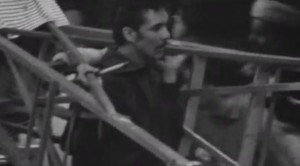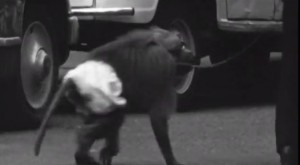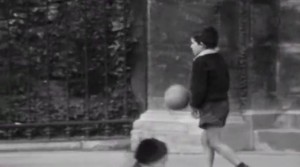Select from one of the readings and briefly describe two point that you have taken from it. Points that interest you, something you could apply to you own documentary.
In the reading Sheila Bernard explores the different ways to present even a focused chronological story in an order that better satisfies the requirements of good dramatic storytelling. She notes that through the imaginative manipulation of time that the filmmaker can present events in an order that they can control. Conversely, in a documentary driven by a narrative sequence of events the filmmaker can’t change the important facts of the main underlying chronology, meaning you can tell the story in the order you like as long as you do it accurately.
“Filming real life is a constant struggle to distill reality into a meaningful subset of itself, into the telling moments, the telling gestures, the lines of dialogue that will suggest the rest of the scene without actually having to see the rest of the scene.”
Bernard notes that shooting through editing is a process of expanding and/or collapsing real time and is about filming a variety of footage so that when it comes to the editing stage there is sufficient material to make the creative edit possible. Steven Ascher’s quote from the reading above outlines the importance of the editing stage as a way to articulate the essence of the scene in a moment, without having to spell it out for the viewer with the whole scene. Furthermore, achieving importance in scenes can also be achieved through the amount of time you devote to a scene to signify their weight within the piece. This is something we’ll have to plan and experiment with in our documentary as we have so many characters and it will be pivotal to interpret their weight to the story by the amount of time the viewer gets to spend with them.
“There are two primary reasons to edit an interview: to focus information for placement in the best possible location in your film’s story and to shorten it.”
Bernard makes some interesting comments about condensing interviews, particularly about the ethical consideration in condensing the material that doesn’t alter the original meaning. Our interviews and filled with great moments and sound bites we can use in correlation with the battle events. However we have to be careful not to displace the comments too much from the base of the interview, as our topic holds a fine line and the last thing we want to do is to satirise the subjects through the edit.
“It’s generally easier to cut into a hard consonant, such as b, t, or v. Words that begin with soft consonants, such as s or h, can be more difficult.”
I find this last quote incredibly interesting, as it’s not really something you initially think about when editing footage. Sometimes it’s easy to get caught up with the progression of images that you forget about whether the cut actually works on a harmonic level for the viewer. I’ve experienced this with sound and music, where cutting on a certain note simply doesn’t work, but it will be fascinating to experiment this with speech.
Reference
Curran Bernard, S. “Manipulating Time.” Documentary storytelling for film and videomakers, Burlington: Focal Press, 2003. Page 63-73


